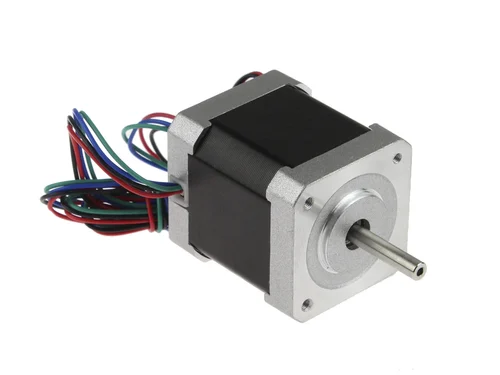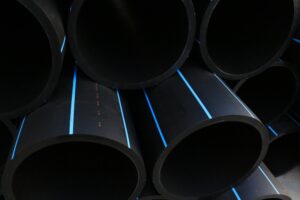Stepper Motors Buyers: Navigating the Market for Precision Motion Control

Introduction
Stepper motors are essential components in various industries, known for their precision, reliability, and ability to convert electrical pulses into discrete mechanical movements. These motors are widely used in applications ranging from 3D printers to CNC machines, robotics, medical devices, and more. As the demand for precision motion control continues to grow, stepper motor buyers play a critical role in selecting the right motor for their specific needs. This article delves into the considerations, challenges, and trends that stepper motor buyers must navigate in the ever-evolving market.
Understanding Stepper Motors
Before diving into the factors that stepper motor buyers should consider, it’s essential to understand what stepper motors are and how they function. Stepper motors are electric motors that rotate in fixed steps, typically ranging from 0.9 to 1.8 degrees per step. This precise movement makes them ideal for applications requiring accurate positioning and repeatability.
Stepper motors come in various types, including:
- Permanent Magnet Stepper Motors: These are the most common type, known for their reliability and cost-effectiveness. They use a permanent magnet rotor and are suitable for applications where high torque at low speeds is required.
- Hybrid Stepper Motors: These combine the features of permanent magnet and variable reluctance stepper motors. They offer higher torque and better precision, making them suitable for demanding applications like robotics and industrial automation.
- Variable Reluctance Stepper Motors: These motors have a rotor made of soft iron, which aligns with the stator’s magnetic field to produce movement. They are less common and typically used in specialized applications.
Key Considerations for Stepper Motor Buyers
When purchasing stepper motors, buyers must carefully evaluate several factors to ensure they select the right motor for their application. These considerations include:
- Application Requirements:
- The first step in selecting a stepper motor is understanding the specific requirements of the application. Buyers should consider factors such as the required torque, speed, and accuracy. For instance, a 3D printer may require a motor with high precision and moderate torque, while a CNC machine might demand a motor with high torque and robustness.
- Motor Size and Type:
- Stepper motors come in various sizes, typically referred to by their NEMA (National Electrical Manufacturers Association) frame size. Common sizes include NEMA 17, NEMA 23, and NEMA 34, with each size offering different levels of torque and physical dimensions. Buyers must choose a motor size that fits their application’s physical constraints while providing the necessary performance.
- Drive Voltage and Current:
- The voltage and current requirements of a stepper motor are crucial considerations. Motors with higher voltage and current ratings typically offer higher torque but may require more robust drivers and power supplies. Buyers should ensure that their chosen motor is compatible with the available power supply and driver circuitry.
- Step Angle and Resolution:
- The step angle determines the motor’s resolution, or how many steps it takes to complete a full rotation. Common step angles include 1.8 degrees (200 steps per revolution) and 0.9 degrees (400 steps per revolution). Buyers must consider the required resolution for their application, as higher resolution motors offer finer control but may require more complex control systems.
- Holding Torque:
- Holding torque is the amount of torque the motor can generate when it is stationary. This is an important factor for applications where the motor needs to maintain its position against external forces, such as in robotic arms or CNC machines. Buyers should ensure that the motor’s holding torque meets their application’s requirements.
- Cost vs. Performance:
- While it may be tempting to opt for the highest performance motor available, buyers must balance cost and performance. High-end motors with advanced features can be expensive, so it’s essential to evaluate whether the additional performance justifies the cost. Buyers should also consider the total cost of ownership, including maintenance and operational costs.
- Supplier Reputation and Support:
- Choosing a reputable supplier is crucial for ensuring the quality and reliability of the stepper motor. Buyers should look for suppliers with a track record of providing high-quality products and excellent customer support. Additionally, suppliers that offer technical support and resources, such as application guides and software tools, can be invaluable in optimizing motor performance.
Challenges Faced by Stepper Motor Buyers
Stepper motor buyers face several challenges in the purchasing process, from navigating a crowded market to ensuring compatibility with existing systems. Some of the common challenges include:
- Market Saturation:
- The stepper motor market is highly competitive, with numerous manufacturers offering a wide range of products. This saturation can make it difficult for buyers to differentiate between products and select the best motor for their needs. Buyers must conduct thorough research and compare multiple options to make informed decisions.
- Technological Advancements:
- The rapid pace of technological advancements in the motion control industry means that new motor designs and features are constantly emerging. While this offers buyers access to improved performance and efficiency, it also requires them to stay updated on the latest trends and innovations. Buyers who fail to keep up with these advancements risk purchasing outdated or suboptimal products.
- Compatibility Issues:
- Stepper motors must be compatible with the existing control systems and mechanical components in the application. Buyers may encounter challenges in ensuring that the motor’s electrical and mechanical specifications match their system requirements. In some cases, buyers may need to invest in additional components, such as drivers or couplings, to achieve compatibility.
- Customization Needs:
- Some applications may require customized stepper motors with specific features or modifications. Buyers seeking customized solutions may face longer lead times and higher costs, as manufacturers may need to design and produce motors tailored to the buyer’s specifications. It’s essential for buyers to clearly communicate their customization needs to suppliers and factor in the additional time and cost.
- Global Supply Chain Disruptions:
- The global supply chain has experienced significant disruptions in recent years, impacting the availability and pricing of electronic components, including stepper motors. Buyers must be prepared to navigate potential delays, price fluctuations, and shortages. Establishing relationships with multiple suppliers and maintaining a buffer stock of critical components can help mitigate these risks.
Trends Shaping the Stepper Motor Market
The stepper motor market is influenced by several trends that buyers should be aware of as they navigate their purchasing decisions:
- Increased Demand for Automation:
- The rise of automation in industries such as manufacturing, healthcare, and logistics is driving demand for stepper motors. Buyers in these sectors are seeking motors that offer high precision, reliability, and ease of integration with automated systems.
- Miniaturization:
- As devices and machines become smaller and more compact, there is a growing demand for miniaturized stepper motors. Buyers are increasingly looking for motors that deliver high performance in a small form factor, particularly in applications like medical devices and consumer electronics.
- Energy Efficiency:
- With a growing emphasis on sustainability, buyers are prioritizing energy-efficient motors that reduce power consumption without compromising performance. Manufacturers are responding by developing motors with lower power requirements and improved efficiency.
- Integration of Smart Technologies:
- The integration of smart technologies, such as IoT (Internet of Things) connectivity and advanced sensors, is becoming more common in stepper motors. Buyers are increasingly interested in motors that offer real-time monitoring, diagnostics, and remote control capabilities.
Conclusion
Stepper motor buyers play a crucial role in selecting the right motors to meet their specific application requirements. By carefully considering factors such as application needs, motor size, drive voltage, and supplier reputation, buyers can make informed decisions that optimize performance and cost-effectiveness. However, navigating the challenges of a saturated market, technological advancements, and supply chain disruptions requires diligence and strategic planning. As the demand for precision motion control continues to grow, staying informed about market trends and advancements will be essential for buyers looking to stay ahead in this dynamic industry.





